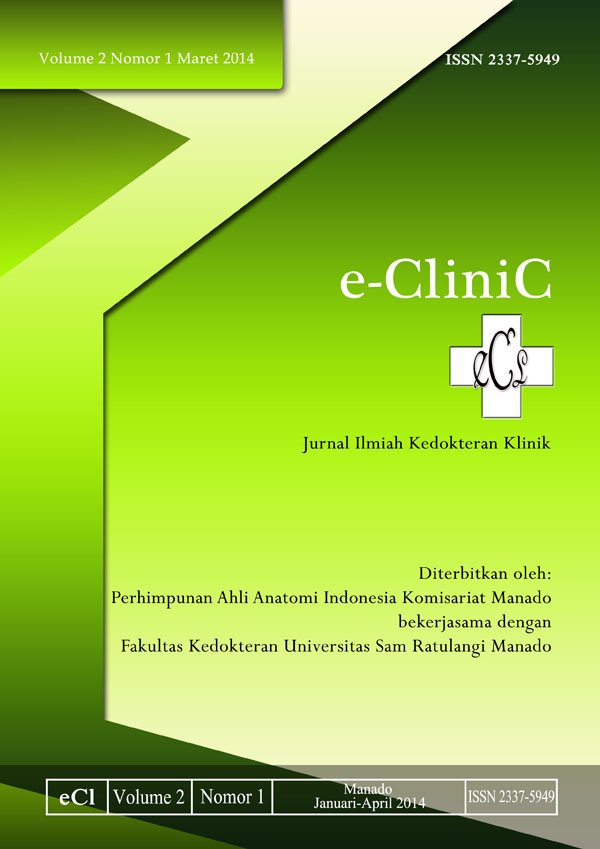Kadar Merkuri Rambut Anak Sekolah di Sekitar Tambang Emas daerah Sulawesi Tengah
DOI:
https://doi.org/10.35790/ecl.v2i1.3738Abstract
Abstract: Health is a major aspect of the child's intelligence. Bright child can advance regional and potentially improve their lives. Environmental aspects for instance the case of mercury which can damage a child's brain. Cases have occurred as a result of mercury toxicity include cases of methyl mercury in the gold mining town of Palu. The relationship between mercury levels in hair and achievement in school in Palu city analyzed using Pearson's correlation coefficient. The results of this analysis obtained r = 0.216 with p = 0.016. The results of this analysis states there is a significant correlation between mercury levels in hair and student achievement in school in Palu (p = 0.016).
Keywords: achievement (national test scores), mercury, blood and hair.
Â
Abstrak: Kesehatan merupakan aspek utama dari kecerdasan anak. Anak yang cerdas dapat memajukan daerah dan berpotensi meningkatkan taraf kehidupannya. Aspek lingkungan misalnya kasus merkuri yang dapat merusak otak anak. Kasus akibat merkuri yang pernah terjadi antara lain kasus toksisitas metil merkuri di penambangan emas kota Palu. Hubungan antara kadar merkuri di rambut dan prestasi belajar di sekolah di kota Palu dianalisis dengan analisis koefisien korelasi Pearson. Hasil analisis ini diperoleh r = 0,216 dengan p = 0,016. Hasil analisis ini menyatakan ada hubungan yang bermakna antara kadar merkuri di rambut dan prestasi belajar siswa di sekolah di kota Palu (p = 0,016).
Kata kunci: prestasi (nilai ujian nasional), merkuri, darah dan rambut.
Â
Downloads
How to Cite
Issue
Section
License
COPYRIGHT
Authors who publish with this journal agree to the following terms:
Authors hold their copyright and grant this journal the privilege of first publication, with the work simultaneously licensed under a Creative Commons Attribution License that permits others to impart the work with an acknowledgment of the work's origin and initial publication by this journal.
Authors can enter into separate or additional contractual arrangements for the non-exclusive distribution of the journal's published version of the work (for example, post it to an institutional repository or publish it in a book), with an acknowledgment of its underlying publication in this journal.
Authors are permitted and encouraged to post their work online (for example, in institutional repositories or on their website) as it can lead to productive exchanges, as well as earlier and greater citation of the published work (See The Effect of Open Access).







